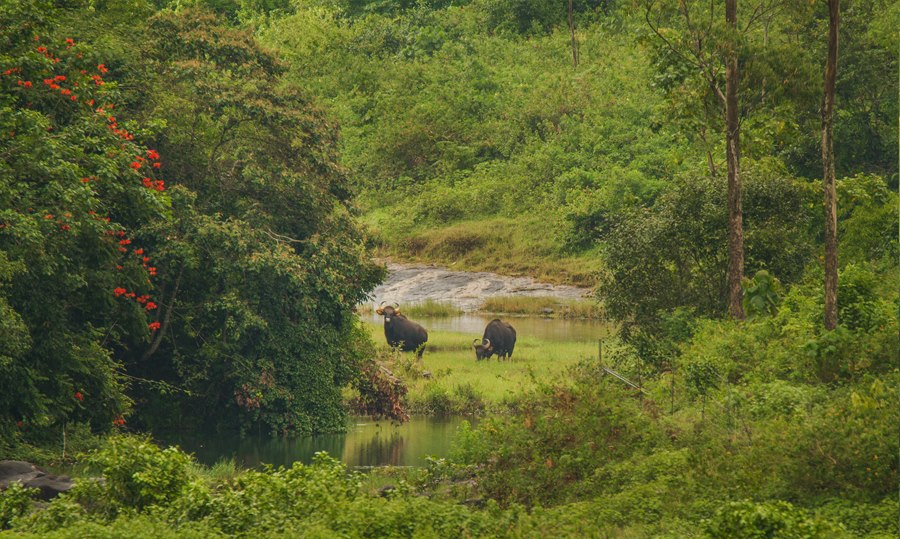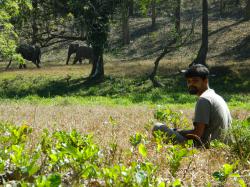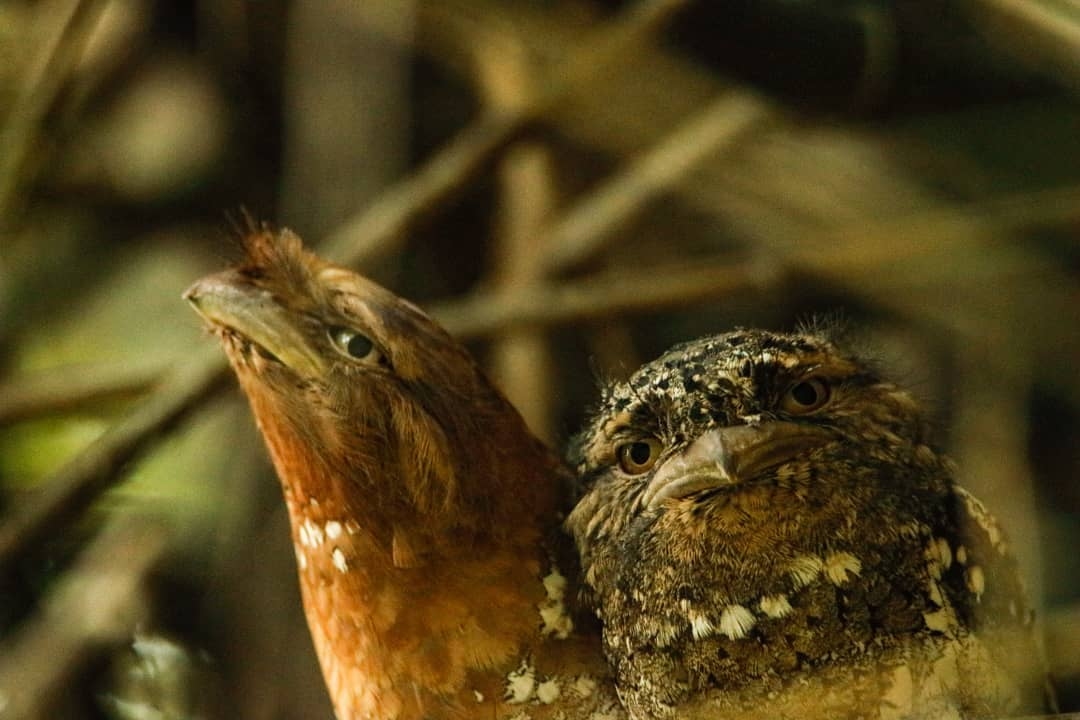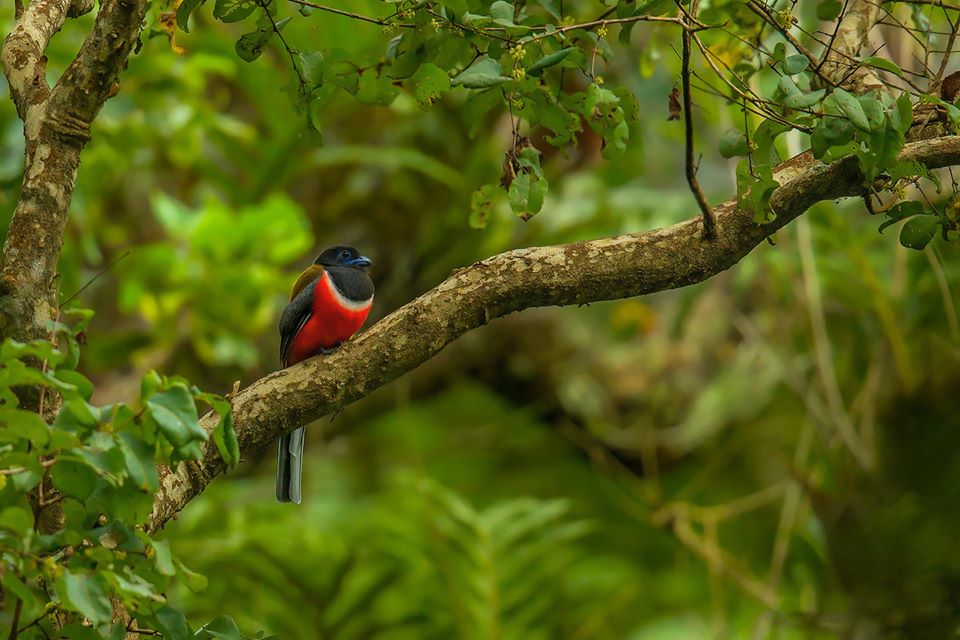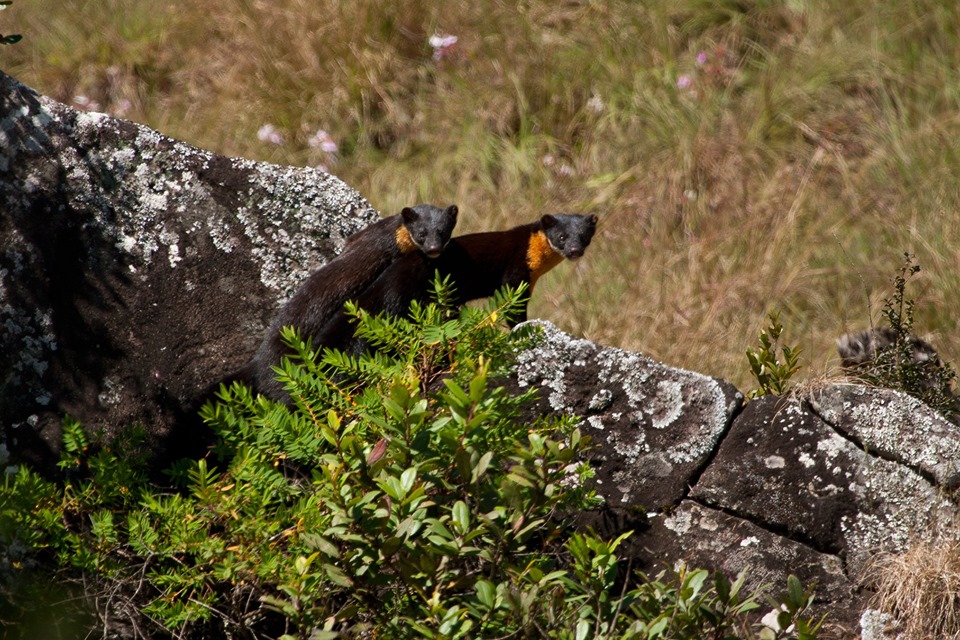On a typical misty winter morning in the mountains of Anamalais, the pale eastern sky gradually changes into vivid colors. The cacophony of birds slowly suppresses the dull buzz of the insects. Amidst a grassy opening among the thick forests of TopSlip or in the tea gardens or swampy grasslands while driving along Valparai, one can see a herd of gaur grazing peacefully on the palatable grasses.
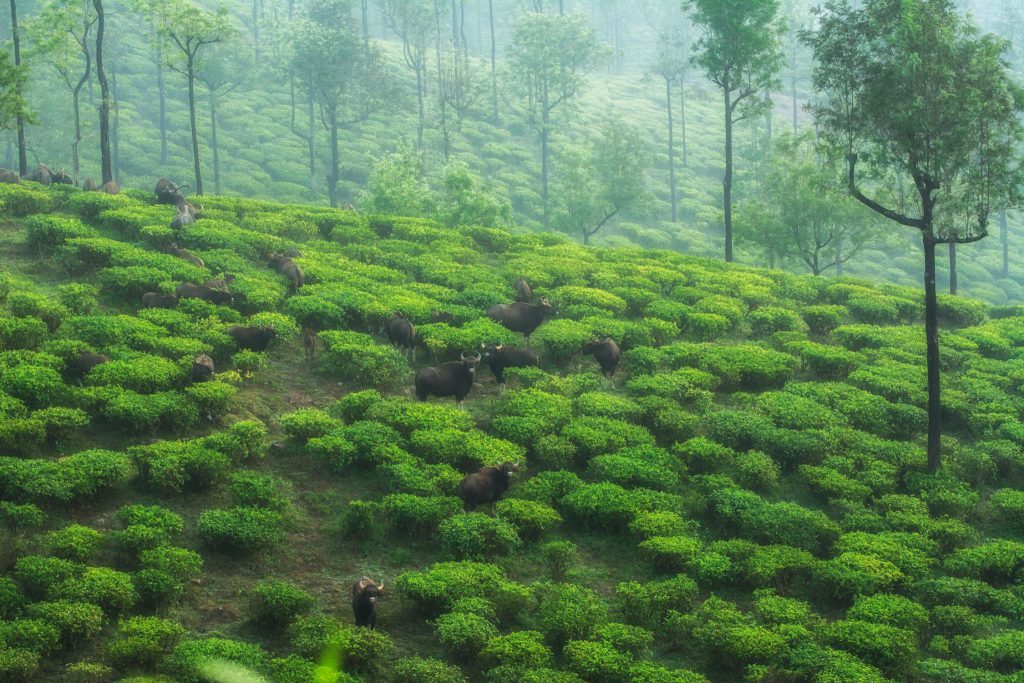
As the sun slowly creeps up the horizon and its angular rays peering through the mist, the glossy black coat of the gaurs can be seen gleaming in the sunlight. Soon as the temperatures rise, the gaurs retreat into the cool shades of the forest.
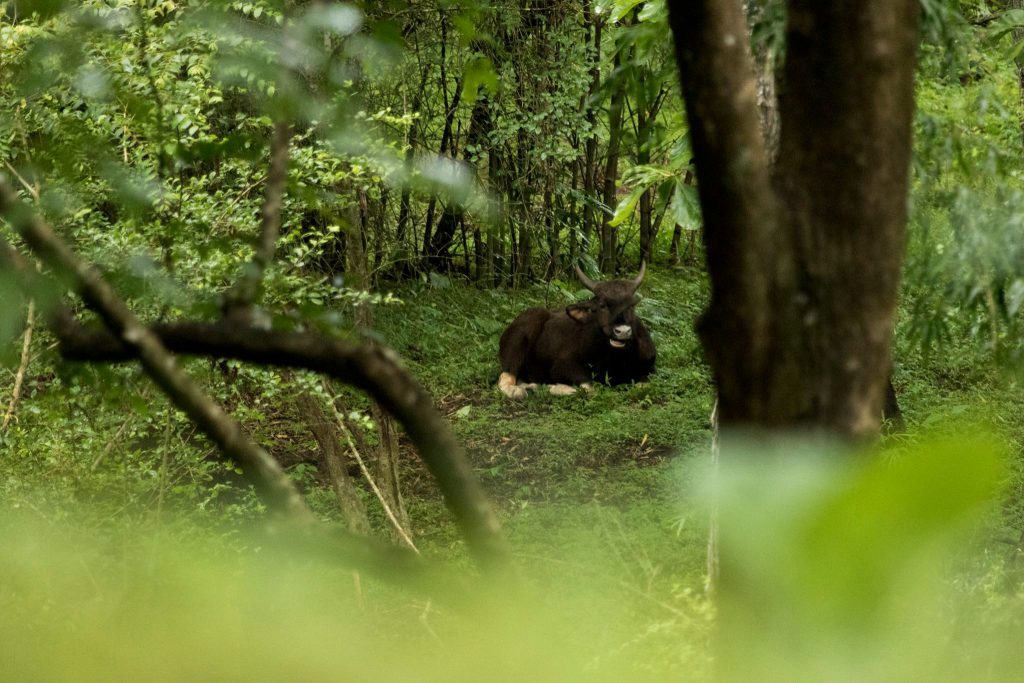
Their grazing bout among the swampy grasslands will resume again only in the early evenings after the temperature drops. Forests and swampy grasslands such as these in the Anamalais are a refuge for gaurs. Although most of the forest tracts inhabited by gaurs are designated as protected areas, they are embedded within a mosaic of human-use landscapes. The gaurs are patchily distributed across the Indian sub-continent and also in some parts of South East Asia, the regions that are densely populated by humans including the Western Ghats in the Anamalais, where guar habitats are interspersed with human-use areas.
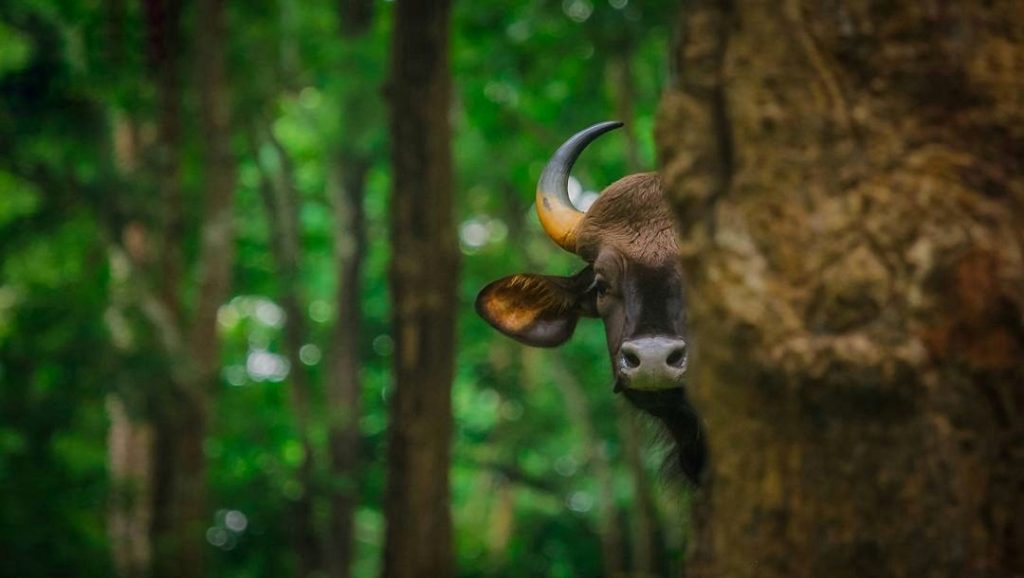
The gaur, with its hefty body and sturdy limbs, are the largest cattle inhabiting peninsular India. An adult male may weigh close to a ton making them the largest wild cattle in the world. The muscular ridge, more prominent in males, that ends abruptly in the middle of the back and the skinny dewlap hanging from the neck to the chest in adult males gives them a semblance of strength. Both the sexes develop prominent white stockings in the legs at an early age and a crescent-shaped horns that jut out from the hairy-grey boss.
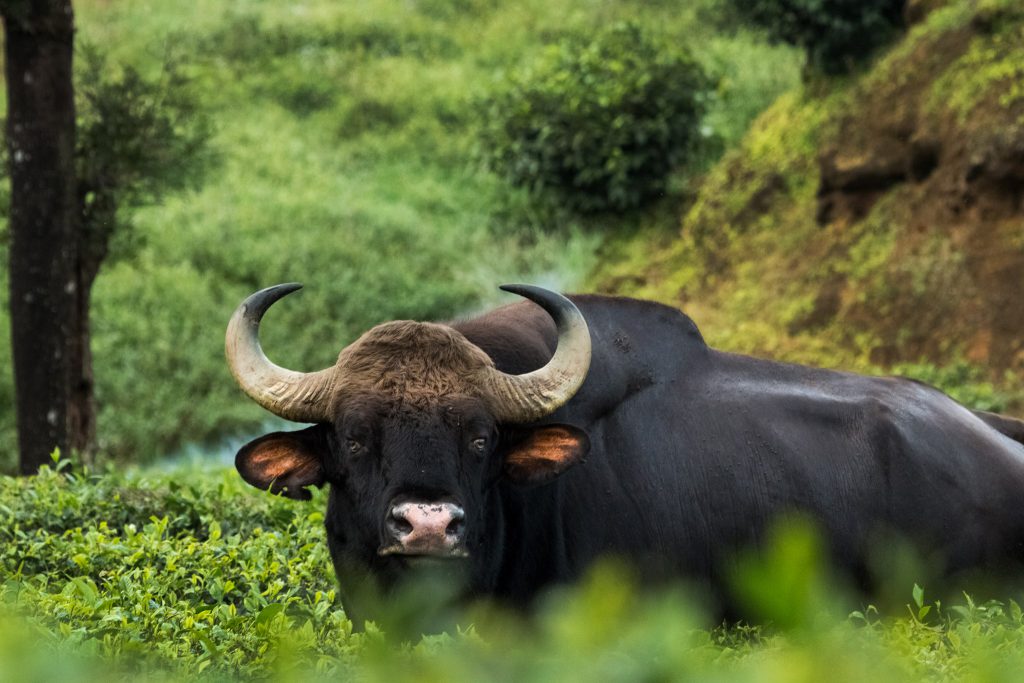
The size of the gaur, the color of the horn and its features, as well as the color of the coat, are generally used to determine age, sex classes in gaurs. The colour of the pelage changes from light brown in calves to dark brown, as they grow old, and finally changes into jet black in adults.
The body size and related metabolic demands influence the food habits of gaur. Gaurs are mixed feeders switching between a diet predominantly comprising of grasses throughout the wet season and browse during the dry season. The switch between the predominant grass to browse diet is said to be influenced by the quality and availability of grass. This adaptation aids the gaur to exploit a wide range of habitats from the thorny scrub forests and the dry deciduous forest to the evergreen forests in the hills. The fluctuations in the grass, browse and water availability in these habitats, makes the gaurs range over a wide area in search of feeding sites.
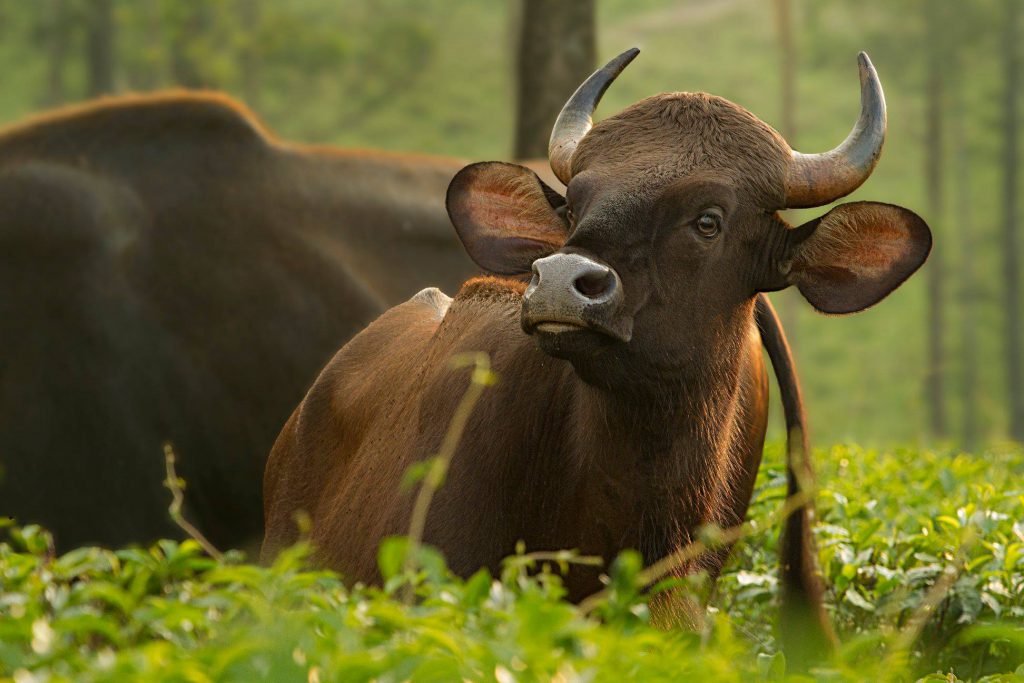
Gaurs feed in groups consisting of cows, calves, and bulls. A typical group size may vary from two to sixteen, comprising cows of various age classes, calves of the adult cows, few sub-adult males and adult bulls. Except during the rut, the adult male tends to remain solitary and may temporally associate with other males forming a bachelor herd.
Dominance hierarchy and social bonds within the herd are determined by the body size of the animal and other social interactions. The feeding bouts of the herd are not continuous leaving wide scope for other social activities. The early hours of the day and the early evenings are the peak periods of feeding bouts with brief activities of cud chewing, resting and grooming. The intermediate hours are mostly spent in resting, grooming, indulging in social activities, searching new feeding sites and also in short feeding bouts.
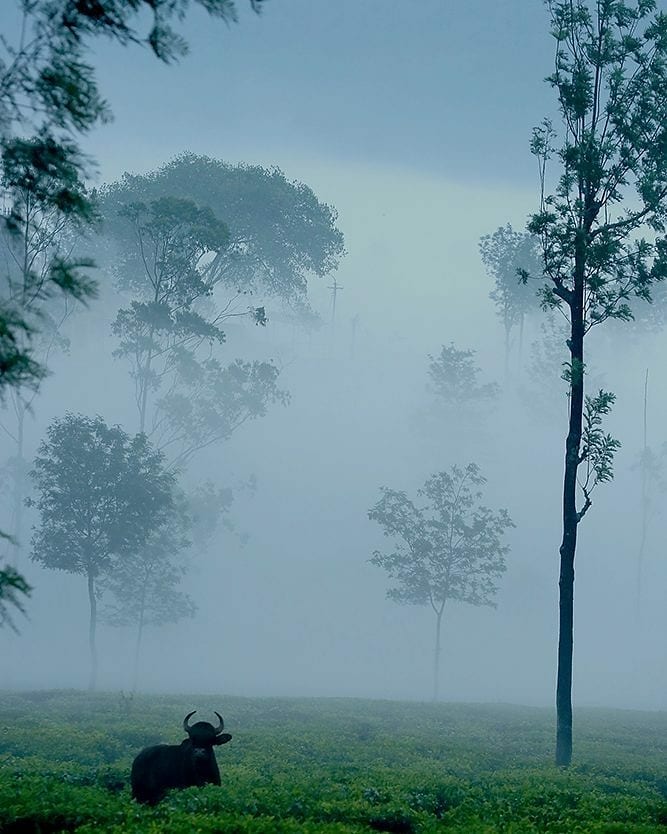
Threats:
Throughout their range, except in parts of Nilgiri, Valpari and Kodaikanal hills in the Western Ghats, gaurs tend to fear and avoid humans. In these hills, gaur land-use mosaic comprises of natural landscapes as well as anthropogenic modifications. Typically, villages abutting the protected areas and human-modified landscapes in the region may retain remnant natural vegetation and structurally similar plantations provide habitat for a wide range of wildlife including gaur.
The inevitable consequences of such a scenario are the habituation, loss of fear of humans and the unavoidable detrimental interaction between humans and gaur. Also, the synergistic impacts of poaching, habitat loss, and contacting lethal diseases from village cattle have caused gaurs to become locally extinct even in some of the protected areas in India. This suggests that gaur populations are highly vulnerable to threats that they face in human-dominated landscapes, thus requiring conservation attention.
Conservation:
Gaurs form the principal prey of tigers, leopards, and wild dogs. The relation between the abundance of large herbivores and tiger densities in tropical forests of India bolsters the significance of large herbivores conservation for saving tigers. Nevertheless, developing appropriate strategies for conservation of gaurs with a scientific vigor is essential for management of carnivore populations across the protected areas of the country.
About the series – Icons of Anamalais:
A treasure house of bio-diversity, the Anamalai’s region of the Western Ghats is home to a spectacular array of wild species, some rare and endemic, that are found nowhere else on Earth. “Elephants Hills” as it is literally translated, the region is one of the most picturesque landscapes in the country that hosts a broad variety of ecosystems ranging from tropical wet evergreen forests to sholas and montane grasslands to dry, scrub jungles.
Home to the large mammals like the Asiatic Wild Elephants, Indian Gaur, the endangered species like the Wild Dogs, Nilgiri Tahr and Lion Tailed macaques, Anamalai’s is also first to be home to all 16 endemic bird species of Western Ghats.
This series of articles by The Pollachi Papyrus, celebrates the iconic birds and mammals of the Anamalai’s –a unique ecological tract and a global biodiversity hotspot that needs protection and conservation.

